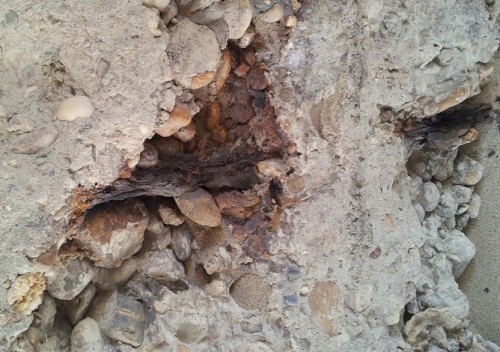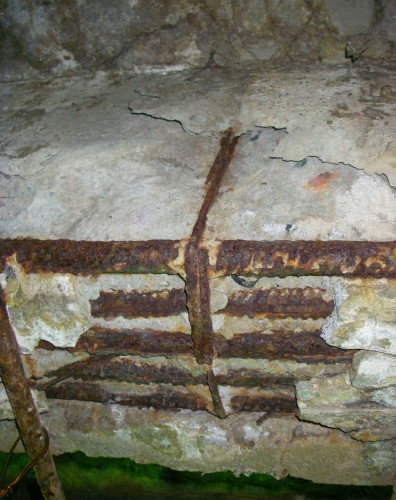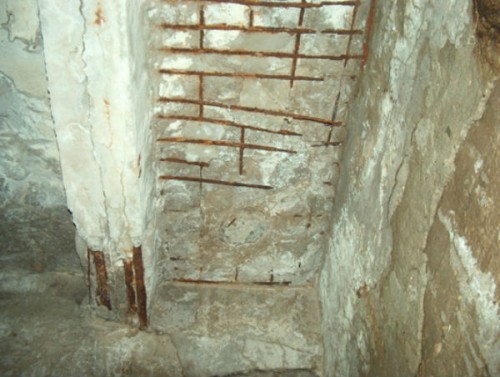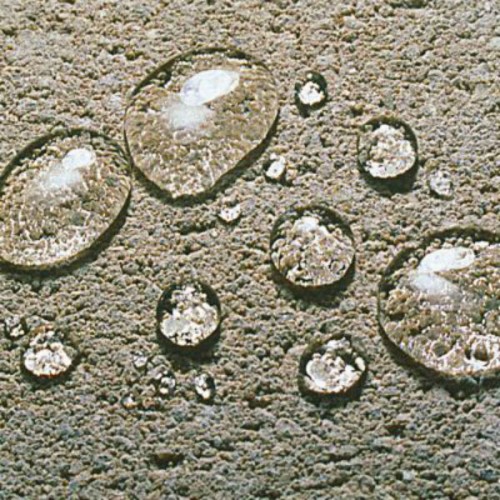
Concrete protection. How to protect concrete from corrosion Building materials
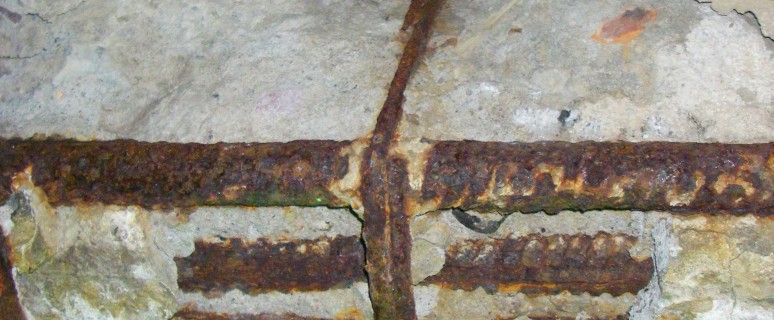
The durability and strength of concrete structures largely depends on the degree and quality of the waterproofing before starting construction. Only competently chosen systems of waterproofing can be warned, only competently selected waterproofing systems can extend the central age and also significantly reduce the cost of its content and restoration.
Content
Protection of concrete
Concrete in its structure is very durable material, which over the years can only be fixed, but only if the conditions for its preparation and operation were properly observed. The durability of concrete directly depends on the conditions of its surrounding environment. The periodic impact on the concrete of an aggressive environment, frost, water, moisture leads to the fact that concrete structures are destroyed over the years, and the once most fasteless material turns into dust.
Corrosion protection is necessary:
- for bridges and facades, periodically climbing against precipitation;
- in order not to destroy concrete aggressive reagents and industrial gases;
- to water the concrete structures of various tanks constantly in contact with water. In this case, materials that guarantee not only high waterproofing, but also resistance to the effects of chemicals and abrasive loads are applied. By the way, in such tanks, the depth of corrosion damage can reach 50 cm.
Materials for protection of concrete
To protect the concrete structure from corrosion, moisture and destruction, as well as increase the strength of the material, hydrophobic substances will help.
Increase the quality of concrete products from cement in two ways:
- Impregnation of concrete. As a result, a decrease in the wetting angle due to the impregnation of concrete with a silicon-organizational composition. The advantage of this method is that the silicon-containing substance is quite durable, has waterproof properties and durability. Such substances in the form of enamel can be purchased at any construction store. The disadvantage of this method is the short-life of the coating. Under the influence of alkalishes, it becomes soluble and loses the hydrophobic properties.
- Creating a waterproof film when a protective layer of various resins - polyurethane, polyvinyl chloride and so on form on the surface of the concrete structure. The disadvantage of this method in low vapor permeability. With prolonged exposure to the pair on the coating, it is destroyed and strates.
To get rid of these shortcomings, it is necessary to combine and impregnating, and the protective layer, but on the basis of one protective composition. At the same time, the film should be resistant to alkalis, and the protective layer has increased vapor permeability.
Requirements for materials
Requirements for materials to protect concrete from corrosion:
- Material to protect concrete from corrosion should have a technical passport and comply with the requirements of the GOST.
- Apply protective remedies necessary, taking into account the impact on the substrate concrete.
- Materials for corrosion protection are chosen taking into account their fire resistance.
- To protect the concrete surface of the underground construction, anti-corrosion material is chosen, given the type of reinforced concrete product, its arrays, construction technology.
- Underground structures that are in contact with groundwater or soil should be protected from corrosion, given the possibility of lifting groundwater.
Protection of concrete from destruction
Protection of concrete from further destruction under the action of an aggressive medium is the primary task of builders both during its construction and before the start of finishing works.
- Moisture, and as a result, the fungus on the surface is the first constructors of concrete, which dwells in a humid environment. Antiseptics, paints and varnish materials, anti-grab impregnations include antiseptics.
- During the manufacture of elements of concrete construction and their further erection, it is necessary to carefully comply with the technology and use the composition of the materials that will be able to resist the environment where the construction will be established.
- Recove the concrete from destruction can be applied to it anti-corrosion coating, impregnation and insulation.
Corrosion concrete protection
The first sign of corrosion on concrete is the appearance of small cracks. Concrete made on a mineral basis in its structure is porous. And it is when it gets into the pores of the concrete to destroy its chemical precipitation and moisture, corrosion arises that destroys concrete.
There are three types of corrosion of concrete:
- chemical corrosion;
- chemical and physical corrosion;
- biological corrosion of concrete.
Chemical corrosion occurs under the influence of precipitation, especially with the presence of sulfates. It is detrimental to the concrete facade of acid rains that leather it. An explicit sign of leaching is white divorces on a concrete structure. In the future, the concrete cracks under the influence of internal stress.
Finding into the pores of concrete in winter - moisture freezes, and in the spring it hits. This action on concrete is called chemical-physical corrosion. The ice inside the concrete destroys it.
In the improper exploitation of the concrete building structure, biological corrosion occurs, the cause of which are microorganisms that form chemical compounds and, thus, destroying concrete.
Methods of protection of concrete from corrosion:
- Corrosion is successfully developing due to concrete porosity. Therefore, it is very important to limit concrete structures from contact with moisture, and also eliminate the possible impact of precipitation. If this is not avoided, then it is necessary to make a concrete with an increased density, without pores. Or, apply a protective coating with hydrophobic properties to the design.
- The hydrophobizer is the best option to protect concrete. It differs from coatings that repulse water in that it retains the porosity of the material, providing guaranteed design protection at ambient temperature from minus 40 to plus 50 degrees.
Among other things, the hydrophobizer does not give concrete cracking.
Reliable to perform anti-corrosion protection of concrete in several stages:
- introduction into cement of various additives that increase its density and regulate porosity;
- the use of anti-grab materials. Impregnations that seal concrete structure. Paintwork materials are used to protect against moisture;
- the use of ribbons from carbon fiber, not subject to corrosion. They are particularly necessary in the case when the carrier metal structure has risen.
Concrete protection from moisture
With the onset of bad weather outside the window, the question of protecting concrete from moisture becomes relevant. Concrete basement, garage, dams on the dam, the foundation - all these structures require protection against their destructive water. Raw walls of concrete structures are easily drinking moisture and mold. These impacts in the future lead to their destruction.
Previously, only dry cement mixtures, rubberoids, synthetic gaskets and sheets were used in the fight against moisture. This, naturally, is not enough to fully protect concrete from water. The first in the fight against excess fluid is the processing of concrete surfaces with hydrophobic materials. The hydrophobizer coating will fill the cracks and pores of concrete, providing it with reliable protection and durability.
By its structure, the concrete foundation has the ability to absorb moisture in an unlimited quantity. Naturally, the worse the quality of the solution and below its price, the worse his ability to repel the water. Therefore, coming to a specialized store, choose only high-quality and preferably certified materials.
Of course, the foundation does not need to be processed by coating hydrophobizers in cases where the favorable conditions for its operation are provided. That is, a dry room with a minimum moisture.
You can protect the finished foundation from moisture in several stages:
- on the finished dry layer of the foundation, a sheet of rubberoid or waterproof building material is spawned;
- sheet seams are shut off a bitumen emulsion;
- from above, sheets are covered with water-repellent coating, varnish or paint.
Concrete protection methods on the street
On the street, concrete can be protected in such ways:
- Applying coatings resistant to ultraviolet exposure.
- Wear-resistant coatings for open areas.
- The use of fluulating impregnation, which improves the strength of the outdoor concrete and chemical resistance.
- The use of polyurethane and epoxy coatings.
Any object, like an environment that surrounds it is unique in its properties. Therefore, it is necessary to competently select waterproofing materials and accurately determine their compatibility with the designed concrete structure.
Protection of concrete from corrosion destruction, moisture and temperatures is a priority task when planning and construction of reinforced concrete and concrete structures. Compliance with the elementary rules for the protection of the foundation using high-quality materials will provide him with strength and long service life.





